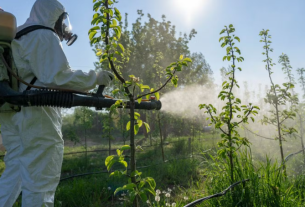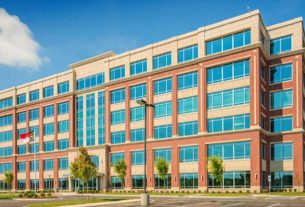In this new series, The Applied Ecologist is amplifying the staff and student voices from the University of Surrey’s Centre for Environment and Sustainability to showcase their diverse, interdisciplinary body of work and to help inspire the next generation.In this post, we share below this year’s BSc student’s experiences of their fieldtrip to South Wales, UK.
Meet Caitlin, Isabel, Izaak, Maddy, Nat, Nina, Romiya, and Tim
We are some of the current BSc students on the Centre’s new BSc in Environment and Sustainability programme.
What have you been working on?
During the South Wales fieldtrip, we explored the case study project of the Rhondda Heritage Park Coal Mines. This attraction allows visitors to experience past industrialization and an insight into what coal mining was like. The experience also showcases the realities of coal mining life, whether it be in the community above or in the underground mine itself.
Throughout our visit to the Rhondda Heritage Park, we made use of various field methods to enhance our learning of the coal mines and to gain an understanding of the urban regeneration of the area. Our main methods of fieldwork were: photos, fieldnotes etc. These methods worked well to encompass the experience of the tour and to visually express the historical context and environment of the mines. The fieldnotes were especially significant as they could implicate the background to Rhondda mines, and the events that went on during the opening of the mine, and the closing of the mine and it’s impacts.
One of our fieldwork methods was taking fieldnotes, we wrote down facts based on the tour guides knowledge and any general information that could be taken from any other form of communication. There was useful detailed information from the museum tablets which detailed the background of the mines and explored the history and the present impact of mines among people and the environment.
The photo below shows the ex-miner showing important features of the mine, and how it linked to his first-hand experiences in the mine. It is important to recognise that the mine has been made safe and fit for tourists to visit. For example, the wooden cladding that is keeping the walls of the tunnel in place, as well as the lighting. Whilst these safety measures have been taken the Rhondda mine has maintained its originality.
Why is this project important?
Regeneration of the mining community through the coal mine experience had many positive impacts. Social benefits that we observed included engagement of the local community to improve and regenerate the coal mine experience and encouraging networking. The want to publicize the mines and educate the public on the mines gave the area a distinct characterization. Increased tourism to experience the tours, from students like us to families looking for an interesting activity, can boost the local economy, not only from spending on the tour itself, but local transport networks to get there, cafes and gift shops nearby.
What we also learnt from our visit was that the Welsh Mining Experience has fostered a strong sense of community pride and engagement. By celebrating and preserving the region’s mining heritage, it has created a shared cultural identity that residents can rally around. This sense of pride has spurred further community initiatives and projects aimed at improving the local area.
Another massive benefit we observed was the reuse of many original features from the mines, this not only highlights the authenticity of the mines, but reduces waste and disposal of heavy machinery and industrial materials. By leveraging its historical assets, the Rhondda Valley has turned a potential economic liability into a sustainable asset. The success of the Welsh Mining Experience demonstrates how heritage tourism can provide a viable economic foundation for post-industrial communities.
Indirect environmental benefits we observed included increased awareness for the damages that both the mining and burning of fossil fuels such as coal can cause to the environment, this can increase mindfulness and encourage people to explore renewable energy alternatives, this was something the museum employees felt very passionately towards, and encouraged any feedback related to the exhibitions that could help further educate the public on coal and use of fossil fuels. Employees also gave insight into future exhibitions directed at the formation and physical background of coal; this may help engage younger generations through a better understanding of the infamous resource.
What are the future implications of your field project?
The transformation of the Rhondda Heritage Park Coal Mines into a tourist attraction is a compelling case of urban regeneration in South Wales. The project has successfully revived a former brownfield site, breathing life back into a community that once thrived on its mining industry. The initiative has not only conserved the historical authenticity of the site but also created an educational space, promoting awareness about the history of mining, its environmental implications, and the need for renewable energy alternatives. The influx of tourists, brought by the interest in this unique ‘mining experience’, has stimulated the local economy, creating a network of benefits extending to transport, food, and retail sectors. The sustainable transition of coal regions into cultural industries is a complex process, requiring thoughtful policies and interventions that go beyond heritage conservation. As this case study demonstrates, it is not sufficient just to remember and showcase the past; strategies that address present socioeconomic conditions and future sustainability are equally vital.
By changing the closed-down coal mine into a tourist site, it was able to preserve the mine’s heritage and showcase it in a more environmentally friendly way. There have also been some economic benefits as the revenue the park makes can help the future develop itself as well as provide jobs for people locally and in the Newport area. In addition, the site brings people from outside Newport into the area and boosts tourism. Also, as there are more people here local businesses can thrive. The social and environmental benefits as the community can socialise in the café and surrounding area as well as allow school children to have an educational day out. The incredible regeneration of the park and coal mine shows how tradition and history can encourage progressive development, allowing the Rhondda Heritage Park to continue and allow future development.
For more information
For more information about the new BSc programme in environment and sustainability, please go to https://www.surrey.ac.uk/undergraduate/environment-and-sustainability






